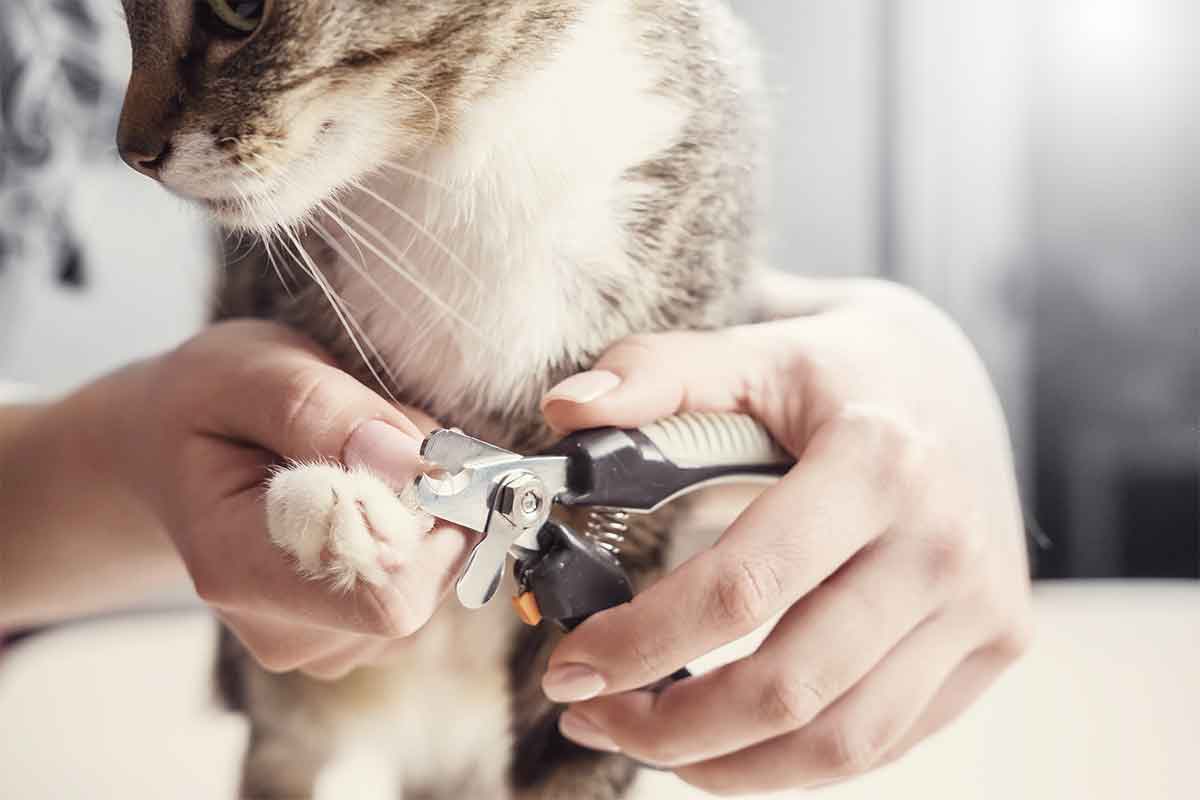Do you dread trimming your cat’s claws? Does kitty feel the same way as you do? It doesn’t have to be that way. Here are some techniques to help both of you get through the process without a meltdown and turn it into an enjoyable bonding time.
Cat Claws 101
Your cat’s claws are similar to human fingernails in that they continue to grow throughout her life. Since claws don’t wear down naturally, your kitty needs to groom them by scratching a textured surface, like your furniture or carpets. Regular toenail clipping helps prevent destructive clawing, and also helps prevent her nails from getting snagged and torn on anything. When she nests on your lap and extends those claws into your leg, you’ll be glad you removed the sharp tips.
Clawful Practice
Start slowly and teach one tiny step at a time, gradually working up to the full procedure as your cat becomes comfortable with each step. It’s unlikely you will get through all the steps in one session. The acclimation process may take as long as several weeks, depending on your cat’s temperament.
Some cats are uncomfortable being handled. If your cat is one of them, wearing a Thundershirt or other snug garment may help to relieve her anxiety.
- Choose a time when your cat is cuddling on your lap and gently stroke one paw for just a second or two. Give her a treat before she has a chance to yank her paw away. If she responds well, do the same with another paw. If she doesn’t like it, quit for a while. You don’t want her to hate sitting on your lap. Repeat this for several days until it is no big deal to her.
- Gently enclose her paw with your fingers for a few seconds, and reward her with a treat if she tolerates it without a fuss. Gradually work up to all four paws over a period of several days.
- Use extra yummy treats. For finicky cats, try treats made from fish flakes, canned tuna, baby food, vanilla ice cream, yogurt, cream cheese, or liver pate. Many cats prefer treats they can lick from your finger rather than something you hand to them.
- Massage her paw with your fingers so she learns to enjoy being handled. You want her to be completely relaxed.
- A cat’s claws retract into a protective sheath unless she purposely extends them. Using gentle pressure, lightly squeeze the top and bottom of her foot to extend her claws. Treat and quit when she allows you to do it without a fuss.
- While she is relaxing on your lap, introduce the sound of the clippers. Open and close them so she gets used to the sound. Let her sniff them, and give her treats to reward her relaxed response.
- Extend her toenails and clip one nail. Just cut the very tip, maybe 1/16 of an inch. Give her a treat and quit for a while. You’ll be able to see the blood vessel, which doesn’t extend all the way to the end of the nail. Be careful not to clip into it, because it will be painful and bleed. Keep some styptic powder on hand to stop the bleeding if you miscalculate.
- As she gets used to the sound and feel of nail clippers, you can work up to trimming more than one nail per session. Follow each snip with a treat, and quit before kitty gets restless and tries to leave. When you are done, cuddle with her some more, so she doesn’t think she gets kicked off your lap as soon as the clipping session is done.
Trim your cat’s nails every 10 days to two weeks. For the first few weeks you might trim one nail a day until she is comfortable with the procedure. With practice you’ll both enjoy this time together and look forward to it!
This article was reviewed/edited by board-certified veterinary behaviorist Dr. Kenneth Martin and/or veterinary technician specialist in behavior Debbie Martin, LVT.








